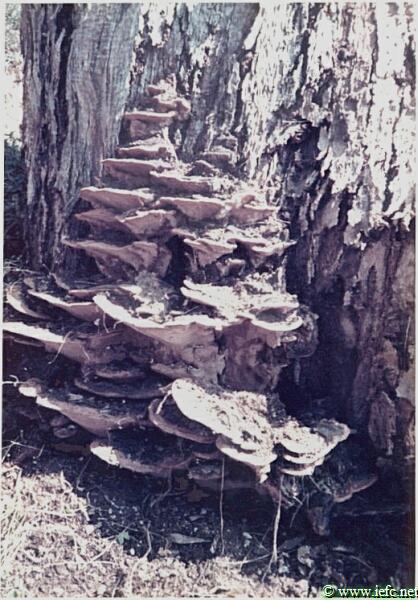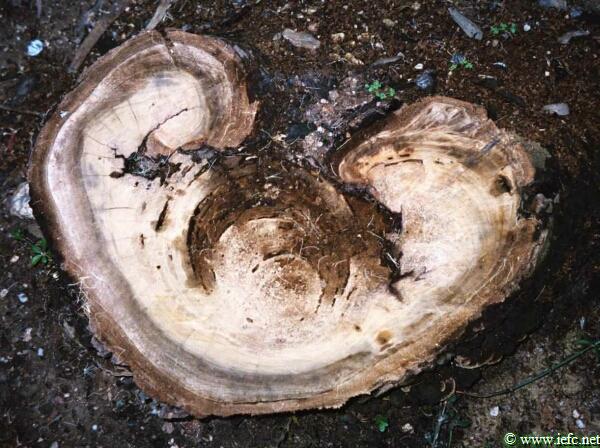Eucalyptus white rot
Phellinus torulosus (Basidiomycota, Aphyllophorales).
synonyms: Fomes torulosus, Polyporus torulosus.
Host tree
Eucalyptus (Eucalyptus), chestnuts (Castanea), oaks (Quercus), poplars (Populus) and also on many other broad-leaved trees.
Identification
- Trees exhibit poor growth, defoliation and dieback of the branches and apexes.
- Presence of large fruiting bodies (carpophores) at the base of the tree trunk. At first they are yellow in colour, latter brown; they are variable in form (Photo 1). These perennial fruiting bodies may persist and enlarge for many years (Photo 2).
- Infected heartwood often shows a spongy whitish rot (Photo 3).
- Roots can also be affected.
Damage
- Heartwood decay causes reduction of timber quality.
- Infected trees can survive many years, but the decay predisposes the trees to breakage.
Biology
- When the wood is highly affected, the fungus produces large sexual fruiting bodies at the base of the tree trunk (carpophores).
- Spores are spread from mature carpophores.
- All over the year, the spores of P. torulosus enter the tree through wounds at the base of the trunk.
- Once within the tree the fungus grows mainly in the heartwood and in the roots.
- Trees can survive for some years, but the fungus progressively invades the wood causing decay and rot root.
Risk factors
- Older trees are more susceptible to damage by this fungus.
Pest management
Preventive measurements
- Avoidance of wounding during silvicultural operations.
- On trees with ornamental value, the wounds must be protected with mastic such as copper-based formulations.
Curative control
- There are no fungicides registered against this disease in Portugal, Spain or France.



